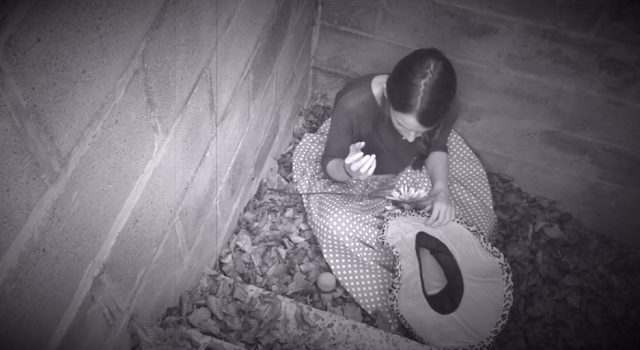In my personal practice and as a teacher too, I've always been inspired by the making process of the performance company
Goat Island. In their books
Small Acts of Repair and the wonderful but hard-to-find
School Book 2 you will find a wealth of ideas, advice and reflection on the process of devising performance. Both books continue to guide me in my development in this world.
There are two resources that are particularly useful though and these are as follows:
Firstly, the idea of
directive-response-response is an important one for me. It often defines the way I work when devising. Simply put, the
directive is a starting point; a stimulus. It can be anything; a picture, a poem, an idea, a provocation...
From these
directives, each person in the collaboration creates a
response; a piece of art, dance, song, writing, performance, etc, which is inspired in some way by their own
directive or to a shared one. They then present this
first response back to the group in an informal sharing. Each person then responds to there presentations with a new response, in the form of a new presentation. This
second response, can reproduce, develop, change, contrast, combine (see the
Richard Serra verb list for more ways) the first responses in some way (including your own response). Then repeat this with other responses and/or new directives, to build a piece.
It is this way of responding to another's ideas again and again that results in performance material being created which is inextricably linked from every thing that has come before it in the process. Everybody in the collaborative has an equal share in what is created and what is created could not have existed in the same way with out every individual's contribution. It is a beautifully organic way of devising which delivers many surprises along the way.
What I have for you then, is a short list of
directives, that you find useful as starting points. Some of them are Goat Island's and some of them are my own.
Create an event of bliss.
Create an event of terror.
Invent an arrival.
How do you say goodbye?
Describe the last time you were kissed.
Create a shivering homage.
Make imbalance.
Describe a perfume.
Give a gift to someone you have lost.
Before, when you looked up, what did you see?
Present your recurring dream.
What will you be when you are 60?
Be your mother.
Why are you nailed to that wall?
Remember your ghosts.
Can you kill this animal? TRY.
Examine a part of your body.
What was your first mistake?
Who is waiting outside?
Describe falling.
Make something of abhorrence.
Window.
Sing of loneliness.
Is she innocent?
Is he wrong?
What are you holding on to?
Describe losing faith.
Describe awe.
Make an escape.
The second awesome list, that I use from Goat Island, is their list of Dynamic Oppositions. Like the Serra verb list, these are great for applying to physical and spoken material to change various qualities of it.
Give them out in pairs, or mix them up and let the makers pick, and you'll be fizzing, oozing, chasing and rattling in no time!
rocket
topple
meander
sidewind
cradle
still
chase
dart
wind
slip
rattle
roll
shudder
stick
twirl
grind
rupture
lean
startle
boil
blend
trip
glide
slide
dart
fizz
spread
wobble
ooze
bang
splatter
squirt
stitch
rip
moan
rumble























